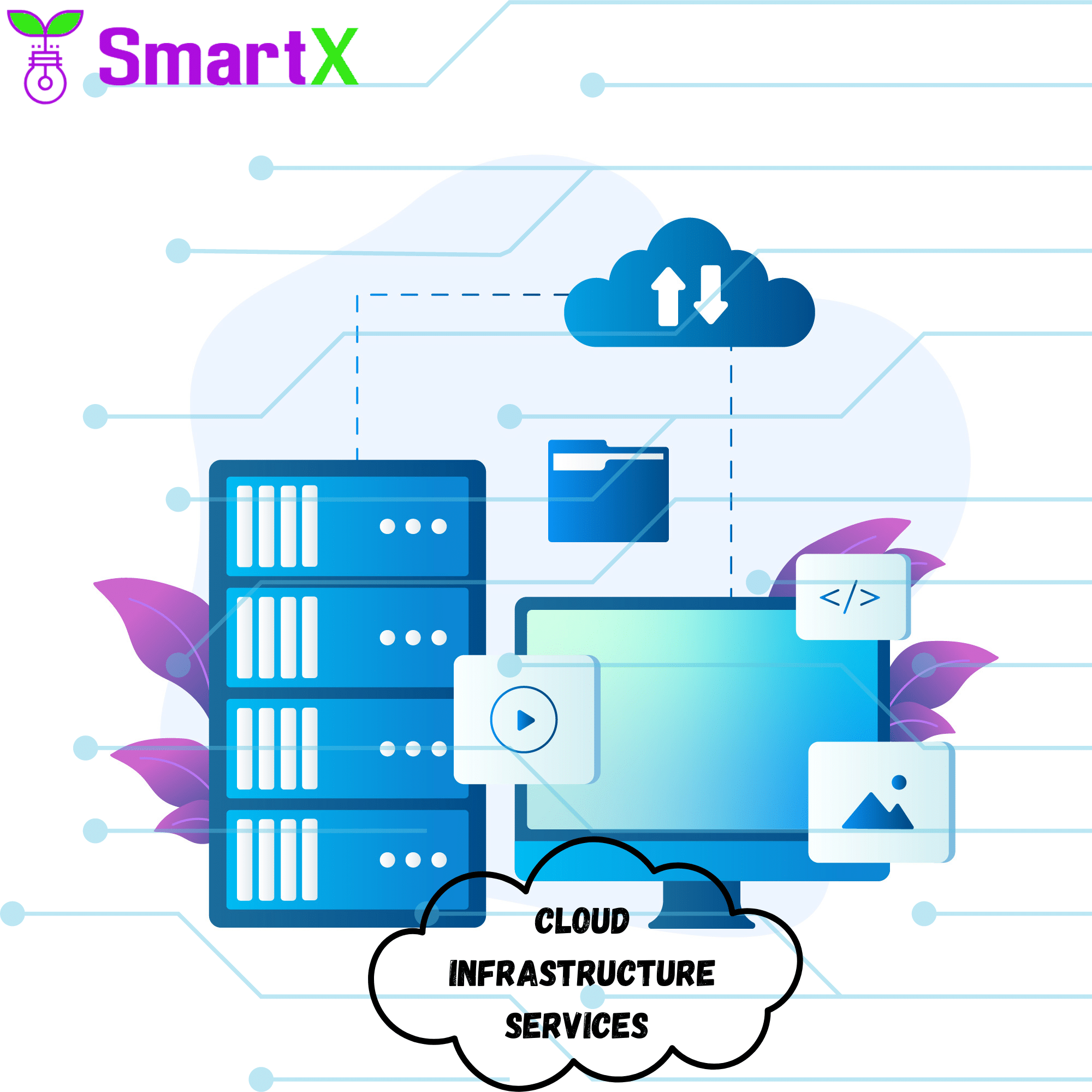The Power of DevOps: Streamlining Processes and Increasing great Productivity - 2023
The Power of DevOps is a ground-breaking approach to software development that combines the best practices of development and operations to streamline processes and increase productivity. DevOps allows organizations to improve collaboration and communication between teams, automate repetitive tasks, and rapidly deliver high-quality software. By utilizing DevOps, businesses can reduce time-to-market, respond to customer feedback faster, and optimize resource allocation. DevOps also helps organizations to minimize errors and downtime, increase scalability and reliability, and ultimately achieve their goals more efficiently. Overall, the power of DevOps is a game-changer for companies looking to stay competitive in today’s fast-paced market.

Introduction to DevOps
In today’s fast-paced digital landscape, businesses are under immense pressure to deliver high-quality products quickly to remain competitive. However, the traditional siloed approach to software development and operations can hinder this process, leading to delays, errors, and inefficiencies. This is where DevOps comes in – a culture and practice that aims to streamline processes and increase productivity by breaking down these silos and fostering collaboration between development and operations teams.
DevOps focuses on automating and optimizing every stage of the software delivery lifecycle, from planning and coding to testing and deployment, ensuring that products are delivered faster and at a higher quality. The power of DevOps lies in its ability to provide a more efficient and effective approach to software development, where teams can work together seamlessly, and changes can be implemented quickly and smoothly. In this blog post, we will explore the benefits of DevOps and how it can transform your business by streamlining processes, increasing productivity, and improving overall software quality.
DevOps helps to automate the software delivery process, leading to faster and more reliable deployment.
DevOps is a methodology that emphasizes collaboration, communication, and integration between development, operations, and other stakeholders involved in the software development lifecycle. One of the key goals of DevOps is to automate the software delivery process, from code development to deployment, testing, and maintenance. By doing so, DevOps enables teams to deliver software faster and more reliably than traditional methods.
To achieve this, DevOps relies on a variety of tools and techniques to automate and streamline the software delivery pipeline. This includes continuous integration (CI), continuous delivery (CD), and infrastructure as code (IaC). With CI, code changes are automatically integrated and tested on a regular basis, ensuring that issues are caught early in the development process. The CD then automates the deployment of code changes to production, with automated testing and monitoring to ensure that the changes are stable and reliable.
IaC, on the other hand, uses code to provision and manage infrastructure, such as servers and databases, as well as software dependencies. This enables teams to define infrastructure as code and automate the process of provisioning, scaling, and managing infrastructure, making it more efficient and less prone to human error.
By automating the software delivery process using DevOps practices, teams can realize a number of benefits. First and foremost, they can deliver software faster and more reliably. By automating repetitive tasks, such as testing and deployment, DevOps frees up time for developers to focus on building new features and improving the user experience.
Furthermore, automated software delivery reduces the risk of human error, leading to fewer bugs and faster resolution of issues. This in turn can lead to better quality software and a better user experience for customers.
In addition to these benefits, DevOps also enables teams to iterate and improve software more quickly. With the ability to test and deploy changes more frequently, teams can gather feedback from users and stakeholders more quickly, leading to faster improvements and a better product.
DevOps enables collaboration between development and operations teams, leading to a better understanding of project goals and objectives.
DevOps is a methodology that emphasizes collaboration and communication between development and operations teams. This collaboration enables teams to work together towards a common goal: delivering high-quality software quickly and efficiently. By breaking down silos between development and operations, DevOps enables teams to gain a better understanding of project goals and objectives.
Traditionally, development and operations teams have operated in separate silos, with limited communication and collaboration between the two. This can lead to misaligned priorities and objectives, with each team working towards different goals. This can also lead to delays in deployment, with operations teams struggling to support and maintain code that was developed without their input.
DevOps seeks to overcome these challenges by encouraging collaboration and communication between development and operations teams. By bringing these teams together, DevOps enables them to gain a better understanding of each other’s priorities, challenges, and goals. This in turn leads to a better understanding of project goals and objectives, with both teams working together towards a shared vision.
Furthermore, DevOps enables development and operations teams to work together throughout the entire software development lifecycle, from code development to deployment and maintenance. By collaborating throughout the entire process, teams can identify and resolve issues more quickly, leading to faster deployment and a better end product.
By working together, development and operations teams can also gain a better understanding of the business context in which the software is being developed. This can include factors such as user needs, market trends, and business objectives. By understanding these factors, teams can develop software that is better aligned with the needs of the business, leading to a better outcome for all stakeholders.
DevOps practices integrate security into the development process, ensuring that applications are secure and reliable.
DevOps is a methodology that emphasizes collaboration, communication, and integration between development, operations, and other stakeholders involved in the software development lifecycle. One of the key goals of DevOps is to ensure that applications are secure and reliable and to achieve this, DevOps practices integrate security into the development process.
By integrating security into the development process, DevOps enables teams to identify and address security issues early in the development lifecycle. This includes implementing security testing and analysis at each stage of the development process, including code development, testing, deployment, and maintenance. By doing so, teams can identify vulnerabilities and security risks early on and can take steps to address them before they become major issues.
DevOps practices also emphasize the use of automation tools and techniques to help ensure that security is integrated into the development process. This includes automated testing and analysis, as well as automated deployment and monitoring. With automated tools, teams can identify security issues quickly and efficiently and can take action to address them before they cause harm.
Furthermore, DevOps practices prioritize the use of secure coding practices, such as code reviews, testing, and the use of secure development frameworks. By implementing these practices, teams can ensure that code is secure from the outset, reducing the risk of vulnerabilities and security breaches.
In addition, DevOps practices encourage collaboration between security and development teams, enabling them to work together to identify and address security issues. This collaboration enables security teams to provide guidance and support to development teams, ensuring that security is integrated into the development process from start to finish.
By integrating security into the development process, DevOps practices help to ensure that applications are secure and reliable. By using automation tools and techniques, implementing secure coding practices, and encouraging collaboration between security and development teams, DevOps enables teams to identify and address security issues early on, reducing the risk of vulnerabilities and security breaches. Ultimately, this leads to better quality software, a better user experience, and increased confidence in the security of applications.
Continuous monitoring and feedback loops help teams to identify and resolve issues quickly, reducing downtime and improving productivity.
Continuous monitoring and feedback loops are critical to ensuring the smooth operation of any team or organization. These practices involve the regular tracking and evaluation of performance metrics, allowing team members to identify and address issues as they arise. Providing real-time information about the health of a system, continuous monitoring, and feedback loops can help teams to improve their efficiency, reduce downtime, and optimize their workflows.
One of the key benefits of continuous monitoring and feedback loops is their ability to identify and resolve issues quickly. By tracking key performance indicators (KPIs), such as response times, error rates, and resource utilization, teams can quickly identify areas that need improvement. This can help them to take corrective action before problems escalate, reducing the likelihood of downtime or other disruptions to their operations.
Another benefit of continuous monitoring and feedback loops is that they can help teams to improve their productivity. By regularly reviewing and analyzing their performance data, teams can identify bottlenecks or inefficiencies in their workflows. This can help them to streamline their processes and eliminate unnecessary steps, reducing the time and resources required to complete tasks.
Continuous monitoring and feedback loops can also help teams to make data-driven decisions. By collecting and analyzing performance data, teams can gain insights into how their systems are operating and how they can be improved. This can help them to make informed decisions about resource allocation, prioritization, and other key aspects of their operations.
Overall, continuous monitoring and feedback loops are essential for any team or organization that wants to improve its performance and productivity. By regularly tracking performance metrics and using that data to drive continuous improvement, teams can stay ahead of the curve and achieve their goals more efficiently and effectively.
DevOps can help organizations to scale their infrastructure and applications quickly and efficiently, meeting the needs of their customers and stakeholders.
DevOps is an approach to software development and IT operations that emphasizes collaboration, automation, and continuous improvement. By breaking down silos between development and operations teams, DevOps can help organizations build, test, and deploy software more quickly and reliably. This, in turn, can help them to scale their infrastructure and applications more efficiently, meeting the needs of their customers and stakeholders.
One of the key benefits of DevOps is its focus on automation. By automating routine tasks, such as testing and deployment, DevOps can help organizations to streamline their workflows and reduce the time and effort required to bring new features and applications to market. This can help them to scale their operations more quickly and efficiently, without sacrificing quality or reliability.
Another benefit of DevOps is its emphasis on collaboration. By encouraging developers, operations teams, and other stakeholders to work together closely, DevOps can help organizations to break down barriers and overcome communication and coordination challenges. This can help them to build more cohesive and effective teams, and to achieve better results more quickly.
DevOps can also help organizations to build more resilient and scalable infrastructure. By using cloud-based platforms and tools, such as containers and microservices, DevOps teams can build applications that are easier to deploy, manage, and scale. This can help them to meet the changing needs of their customers and stakeholders more quickly and efficiently, without having to invest heavily in new infrastructure or hardware.
Overall, DevOps is a powerful approach to software development and IT operations that can help organizations to scale their infrastructure and applications more quickly and efficiently. By emphasizing collaboration, automation, and continuous improvement, DevOps teams can build more resilient and scalable systems, and deliver better results for their customers and stakeholders.
Conclusion
In conclusion, implementing DevOps practices can significantly streamline processes and boost productivity within an organization. By breaking down silos and encouraging collaboration between development and operations teams, DevOps enables organizations to deliver software faster, with higher quality and reliability. Automation, continuous delivery, and monitoring are critical components of DevOps, and their adoption can lead to increased efficiency, reduced costs, and improved customer satisfaction. As businesses continue to face the challenges of digital transformation, DevOps will undoubtedly play a crucial role in helping them stay competitive and agile in an ever-changing landscape.
Thank you for exploring the power of DevOps in streamlining processes and productivity. To get an overview of DevOps services and their role in revolutionizing software development, check out our post: Revolutionizing Software Development: An Overview of DevOps Services – 2023















